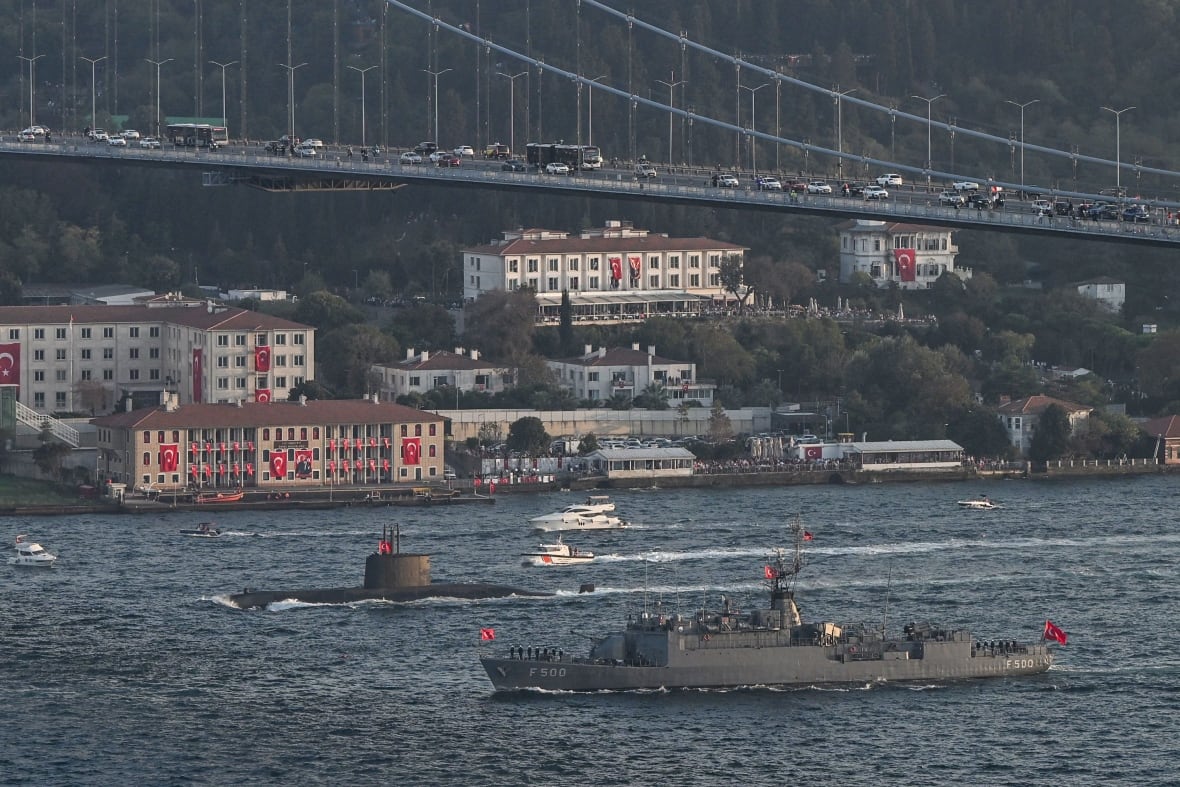Italy yet again plans to build a bridge to Sicily. It may succeed, thanks to NATO spending push
Giorgia Meloni administration promises to succeed where previous ones dating back 60 years have failed

Italy is once again pushing ahead with a plan to link the mainland with Sicily in a massive infrastructure project that, even if everything goes according to plan, will take nearly eight years and 13.5 billion euros to construct.
The Strait of Messina Bridge will be "the biggest infrastructure project in the West," Transport Minister Matteo Salvini boasted on Wednesday in Rome after a government committee approved the project, its price tag the equivalent of $21.6 billion Cdn.
A bridge linking Sicily to Calabria has been proposed, approved and cancelled multiple times over several decades, with sometimes colourful history. Atlantic magazine deemed it, in 2023, "The Bridge That Divides Italy," as it has inspired strong reactions on both sides of the debate.
"Such a bridge has long been a dream of Italians, especially of the growing population of Sicily," The Associated Press wrote in a report almost exactly 72 years before Wednesday's approval on the occasion of a visit by a U.S. engineer commissioned by a Milan industrial group.
In 1965, meanwhile, famed underwater explorer Jacques Cousteau was conscripted by Italian and American companies jointly proposing a bridge. Cousteau undertook feasibility surveys of the bed of the Messina Strait, his exploration prompted by the Messina earthquake 57 years earlier that killed at least 75,000 people, with some estimates of the death toll much higher.
In 2005, Italian police announced arrest warrants for a handful of individuals accused of laundering the proceeds of crime as part of an illicit consortium trying to win a bridge contract, including Montreal mob boss Vito Rizzuto and Giuseppe Zappia, the developer once accused of falsifying construction costs for the 1976 Montreal Olympics but never convicted. The two were never extradited to Italy; Rizzuto died in 2013.
Starts and stops
The Italian government first formally solicited proposals for the bridge in 1969 before it was revived by Premier Giorgia Meloni's administration in 2023.
In between, it was a long-held dream of Silvio Berlusconi, who led Italy three times between 1994 and 2011 and rose to prominence decades earlier as a developer in Milan.
A plan by Berlusconi's Forza Italia to build a bridge was scrapped in 2006 under the government of Romano Prodi, not long after an estimated 10,000 people demonstrated against the project in Messina. Another Berlusconi-led push fizzled by 2013, as Italy and other European countries confronted a debt crisis.
Salvini has pledged that keeping organized crime out of the project will be a top priority, saying it would adhere to the same protocols used for the Expo 2015 World Fair and next year's Milano-Cortina Winter Olympics.
"We need to pay attention so that the entire supply chain is impermeable to bad actors," he said.
Salvini cited studies showing the project will create 120,000 jobs a year and accelerate growth in economically lagging southern Italy, as billions more in investments are made in roads and other infrastructure projects accompanying the bridge. While Sicily has been among the country's noted tourist destinations with its beaches and the active volcano Mount Etna, Calabria ranks near the bottom of Italian provinces in terms of international visitors.
The specs
Under the plan, the Strait of Messina Bridge will measure nearly 3.7 kilometres, with the suspended span reaching 3.3 kilometres. The longest suspended span currently is the Canakkale Bridge in Turkey, at over two kilometres long.
The deck will be around 60 metres wide, with three road lanes in each direction and two railway tracks.

There will be towers on the Sicilian and Calabrian sides, each made entirely of highly resistant steel, standing 400 metres tall and weighing 55,000 tonnes.
The project has been awarded to a consortium led by WeBuild, which has been involved in major projects around the world, including in Canada and Turkey's Canakkale Bridge. The consortium also includes Spain's Sacyr and IHI from Japan.
Addressing concerns about building the bridge over the Messina fault, WeBuild has emphasized that suspension bridges are now structurally less vulnerable to seismic forces. It has noted the suspension bridges that now exist in seismically active areas, including in Japan, Turkey and California.
Environmental groups have also raised concerns, lodging additional complaints with the EU indicating that the project will impact migratory birds, noting that environmental studies have not demonstrated that the project is a public imperative.
But is it defence spending?
Among the reasons to believe that the current project could succeed whether others have failed to materialize is the renewed push from NATO to boost defence spending, with Italy in recent years languishing near the bottom among alliance members.
NATO has endorsed a higher defence spending goal of five per cent of GDP by 2035. While countries are to devote 3.5 per cent of GDP on core defence — such as troops and weapons — 1.5 per cent can be allocated for broader defence-related measures such as cybersecurity, protecting pipelines, and adapting roads and bridges.
Italy has indicated it would classify the bridge as defence-related, arguing it would form a strategic corridor for rapid troop movements and equipment deployment to NATO's southern flanks.
A group of more than 600 professors and researchers signed a letter earlier this summer opposing the military classification, noting that such a move would require additional assessments to see if it could withstand military use. Opponents also say the designation would potentially make the bridge a target.
With files from The Associated Press, Reuters